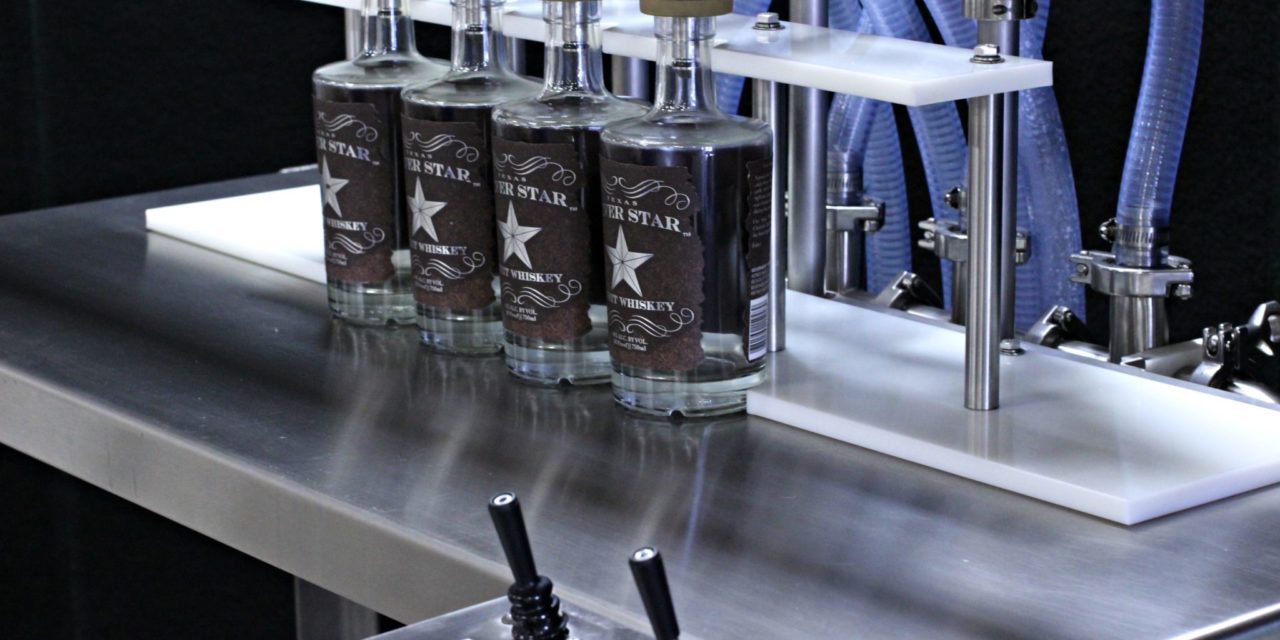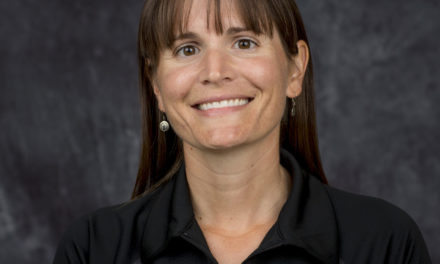Your business is growing and it’s time to consider adding equipment that can provide automated case filling and palletizing. Here, we’ll cover what you need to know to ensure your decision is well planned.
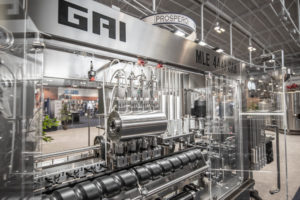
[Photo courtesy Prospero Equipment Corp.]
If you’re a small-scale producer (say, 15,000 cases or fewer) with a line that fills up to 50 bottles per minute, filling cases and palletizing is generally done by hand; it just makes sense money-wise (and, more often than not, space-wise). But if you’re producing more than that, there are machines that can provide a streamlined outlet for your finished product. For example, beer is placed into six-packs and then placed into a case carton by one machine, another seals the carton, then yet another puts those cases onto the pallet and wraps them. For wine, the machine places the bottles into a case and then tapes the top. Large-scale wineries have machines that palletize and wrap those cases. But first you need to know if you have enough floor space to make that happen.
“Think about your physical floor space; automated tables take up more room and require compressed air and dedicated power [they use more amperage],” says Matt DiDonato, East Coast sales representative for Prospero Equipment Corporation in Pleasantville, N.Y. “If you’re in the process of moving to a larger space, locking that location down is key,” he adds. “We get calls all the time from people who’ve lost their building.” He also mentions permits and zoning depend on location.
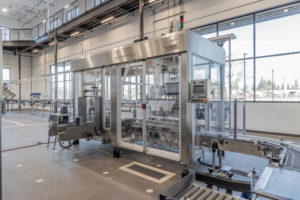
[Photo courtesy Prospero Equipment Corp.]
“We frequently hear from breweries that want the machines to be compact because they don’t have a lot of space,” says DiDonato. “This is a major thing because all automated machines are robotic and require extra room to operate.” He adds that most people looking to upgrade their system go for a depalletizer first, which automatically takes bulk glass and places the bottles on the filling machine line. “The end-of-the-line machines come later.”
Attention to Detail
But how do you decide which machines are right for you? First, it’s imperative to know what your packaging will be prior to choosing equipment. “Know what you want beforehand so, while the machines are being built, you know they’re going to work with your product,” says DiDonato. “If you send the machine manufacturer a sample, it can be tested to ensure all the parts are correct for specified bottle sizes. Custom parts can be added accordingly.”
Depending on your budget, you can truly customize and control quality down to the smallest detail.
“Some machines can weigh the case and, if it’s not right, they kick it out. It’s a way to self-check,” says DiDonato. “There also are X-ray machines that will scan bottles as they come out of the filter. You can get into really nice automation where you’re guaranteeing each bottle is perfect, including label inspection. The product goes to the customer base with no mistakes.”
Integrating Systems

“Sometimes the manufacturing process of a line is only part of the end result. You also need to think about power supply, material handling, and supply chains.” —Tony Swedersky, E-PAK Machinery
Tony Swedersky is president of E-PAK Machinery in La Porte, Ind., which specializes in system integration. “We partner with others to do depalletizing, case filling, and palletizing,” he says. This is a key factor when upgrading, moving, or designing your system—ensuring each of the parts work together seamlessly.
“For a startup company, we’ll measure space and design a line that will fit their needs, including the amount of automation. Once designed, we’ll build criteria and integrate equipment and do factory acceptance testing. What’s important here is that people need to plan for future automation and growth, especially when moving from hands-on to automated processes,” says Swedersky.
“Sometimes the manufacturing process of a line is only part of the end result,” he adds. “You also need to think about power supply, material handling, and supply chains.”
He mentions that, during the past several years, there have been supply chain issues due to the competitive marketplace. This means paying attention to detail. “For example, if demand goes up and you’re on an automated system—say, suddenly you need more cardboard than before—you might be able to find it from a different supplier. But if the material is different than what you’re already using, that can affect your system’s performance.” Bottom line? Have a backup plan and maintain relationships with your network of suppliers.
Patience, Grasshopper
Designing, upgrading, or moving your system is a time-consuming process. “If you’re getting into a large, robotic, automated system, it will take 24 to 36 weeks before it arrives,” says Swedersky. “Things are getting backed up because of industry growth; supply chains are affected in unexpected areas, which is creating deliverables issues.” And that isn’t always the main setback.
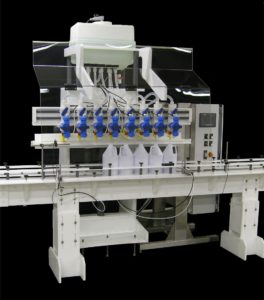
[Photo courtesy E-PAK Machinery]
Once you’ve worked with your suppliers to create the system that fits your budget and needs, and have waited the six to eight months for it to arrive, getting everything online takes even more time. “For automated machines, including the whole line with a depalletizer and end-of-line packaging, it takes about two to three weeks to install and test the machine, train the crew, and provide follow-up visits for maintenance,” says DiDonato.
Custom Jobs
In the spirits world, it’s more common to use custom bottle types, which affects machinery choices—and cost. “Most distilleries are choosing nicer, heavier bottles,” says DiDonato. “The machines can do a wide range of things; it just depends on what you want to spend. For example, we worked with a distillery that wanted to put the label on top of a T-cork, which would have cost $60,000 to $70,000 more for the right equipment. They decided the label would go on the front of the bottle instead,” he adds.
Considering where your product is distributed is also important when it comes to bottle size, shape, and weight. “Custom bottles are fun for us,” says Swedersky. “They’re challenging and make a big impact on consumers. But if you have a large retailer you work with regularly, you may be limited by its restrictions regarding weight and ergonomics.”
Partner Up
Partnering with suppliers who can help you design a system that works well for your product, space, and budget is an obvious first step. Finding those that understand longevity within the industry as well as what it takes to grow successfully will help you both now and down the line.
“A like mindset between producers and equipment suppliers is hugely important,” says Swedersky. So make a connection that counts.

